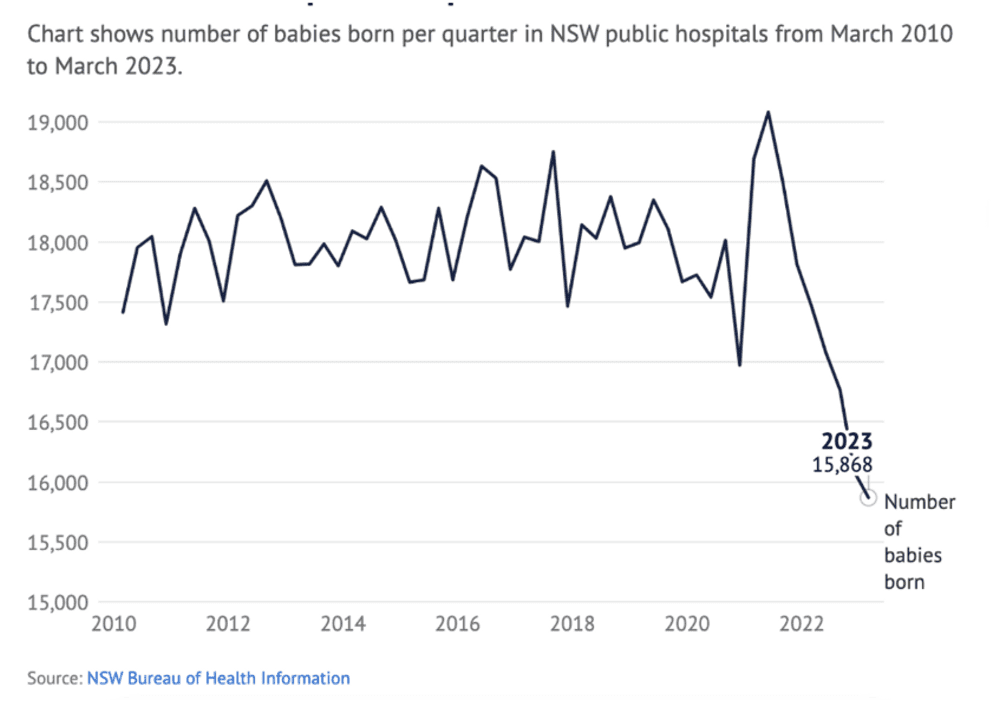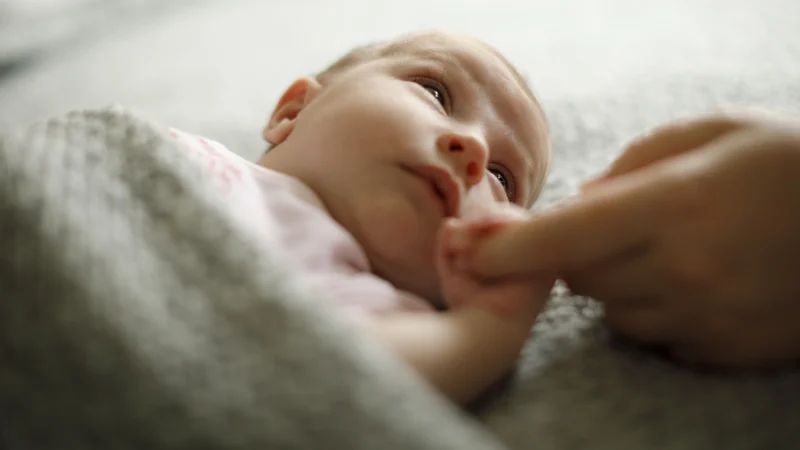Australia is dealing with population and economic growth problems in the next 40 years due to the decline in the birth rate.
Recent data from the Bureau of Health Information reveals that only 15,868 babies were born in public maternity wards between January and March 2023, the lowest since 2010.

Projections indicate that Australia’s total fertility rate, which stood at 1.66 babies per woman in 2022-23, is anticipated to dip further before stabilising at 1.62 babies per woman from 2023-31. And the fertility rate is expected to remain at this level until 2062-63 as reported by Intergenerational Report 2023. The future fertility rates for teenagers and women in their 20s are projected to continue declining before reaching a stable point, whereas fertility rates for women in their late 30s seem to have already stabilised.
According to the 2023 Intergenerational Report, in comparison to the previous generations, women in contemporary society enjoy expanded access to education and enhanced opportunities for opportunities for meaningful involvement in the workforce. This is a key factor influencing many to focus on establishing their careers and achieving financial security before embarking on family planning.
Talking to The Sydney Morning Herald, Terry Rawnsley, KPMG urban economist, said that housing affordability and fertility rates had a solid connection.
“When you compare Sydney, Melbourne, Brisbane and Perth, it is the cheap-to-live-in cities that tend to have higher fertility rates because it’s a much easier equation to have more children,” Mr Rawnsley said.
According to The Sydney Morning Herald, the decline in fertility will cause lasting economic consequences. One prominent effect will be a reduced ratio of young labourers to pensioners – which will heap pressure on the government’s capability to provide health services and welfare. Another impact that should be considered is that as the population ages. Australians are projected to continue living longer and remain healthier to an older age while having fewer children. This is leading to an ageing and a slower-growing population. The average annual population growth rate is projected to slow to 1.1% over the next 40 years, compared to 1.4% for the past 40 years. Australia’s labour force participation rate is anticipated to decrease over the next four decades, dropping from 66.6% in 2022-23 to 63.8% in 2062-63. This shift is driven by the increasing proportion of older Australians, who generally engage less in the workforce.
Cre: Shane Wright.

